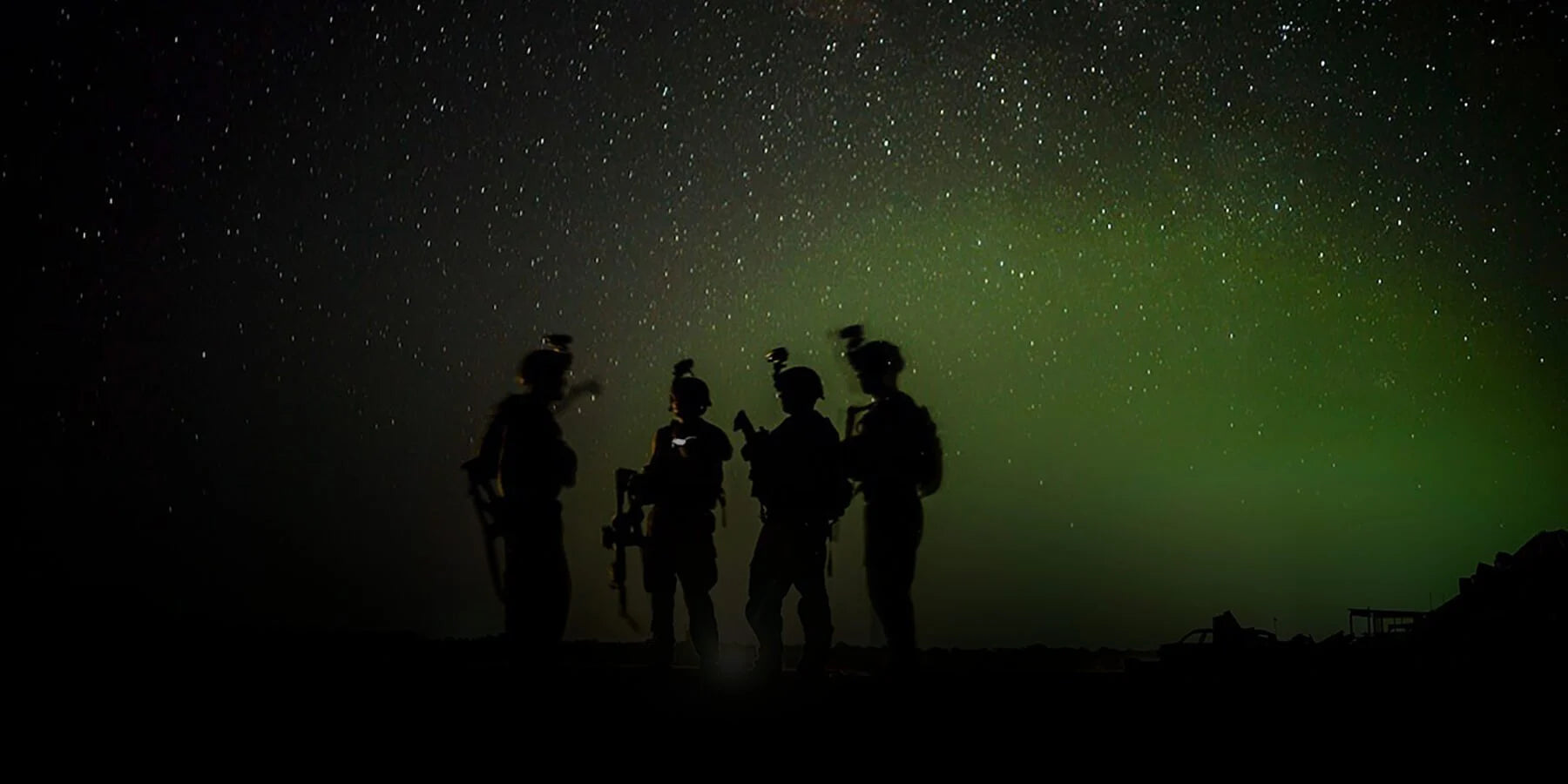WHAT NIGHT VISION LETS YOU SEE
Night vision technology operates on a fundamental principle: there's always some form of light present, even in what appears to be total darkness to the human eye. Moonlight, starlight, and artificial illumination from distant sources provide visible light and infrared light that specialized sensors can detect and amplify.

Available Light Sources Include:
- Natural ambient light from the moon and stars
- Nightglow - emission of light from the upper atmosphere
- Artificial light pollution from distant urban areas
- Near-infrared wavelengths in the infrared spectrum are invisible to the naked eye
Modern night vision systems capture these minimal light sources and multiply their intensity, creating visible images from seemingly invisible scenes in dark conditions. This image intensification process extends human vision into previously inaccessible darkness while maintaining depth perception and peripheral vision capabilities.
NIGHT VISION TYPES
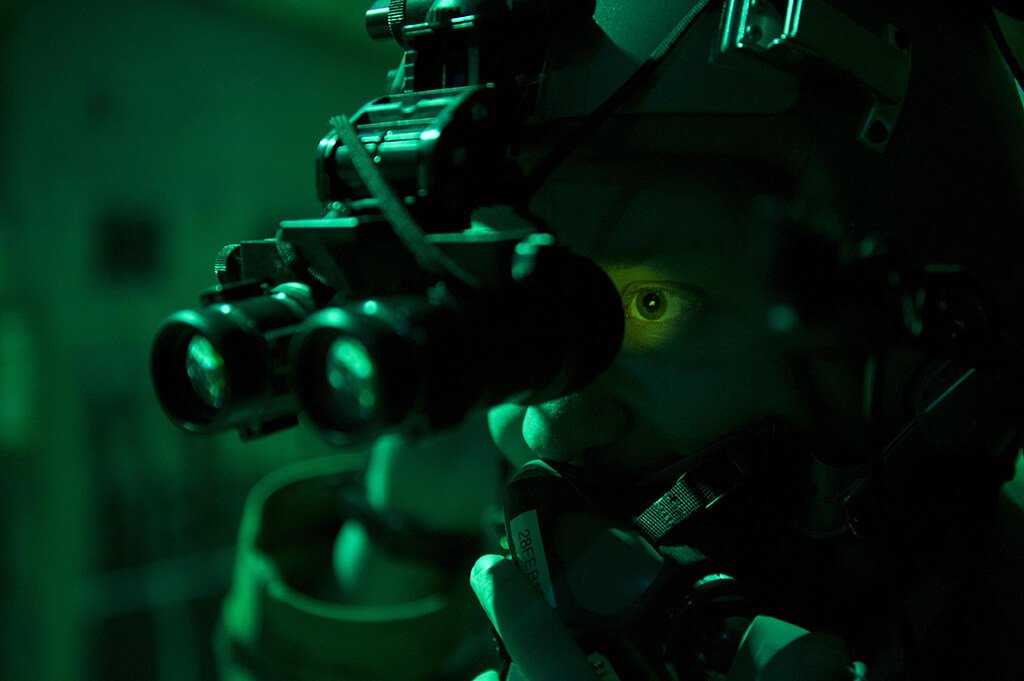
ANALOG
Traditional analog night vision relies on sophisticated image intensifier tubes that convert photons into electrons, amplify them, and transform them back into visible light. The process begins when an objective lens collects available light and directs it toward a gallium arsenide photocathode surface that converts photons to electrons. These electrons travel through a microchannel plate where they multiply exponentially before striking a phosphor screen, creating the characteristic green-tinted image viewable through night vision goggles.
Analog System Benefits:
- Excel in extremely low light conditions
- Consistent performance across temperature variations
- Relatively low power consumption
- Proven reliability for military operations and law enforcement
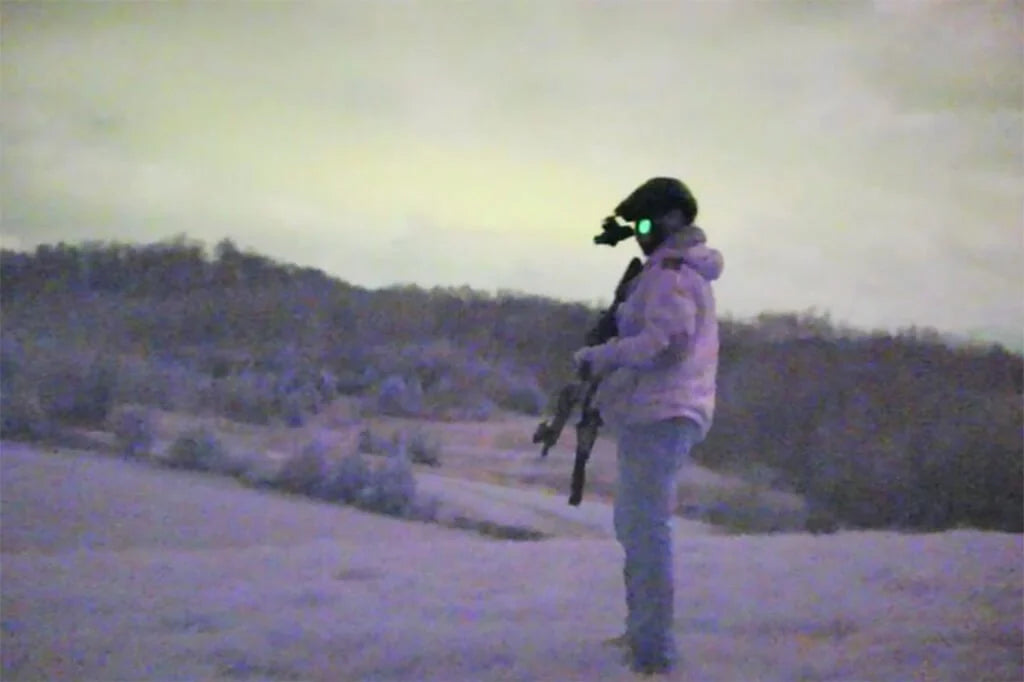
DIGITAL
Digital night vision represents the newest evolution in low-light imaging, using advanced sensor technology similar to digital cameras but optimized for minimal lighting conditions. Instead of converting light to electrons and back to light, digital systems capture incoming photons directly with specialized CMOS or CCD sensors featuring enlarged pixel structures that gather more light per pixel.
Digital System Advantages:
- Color imaging under appropriate lighting conditions across the visible spectrum
- Recording and streaming capabilities for documentation
- Integration with navigation and display systems
- Adjustable gain and exposure settings for various dark conditions
- Resistance to bright light damage that affects traditional image intensifier tubes
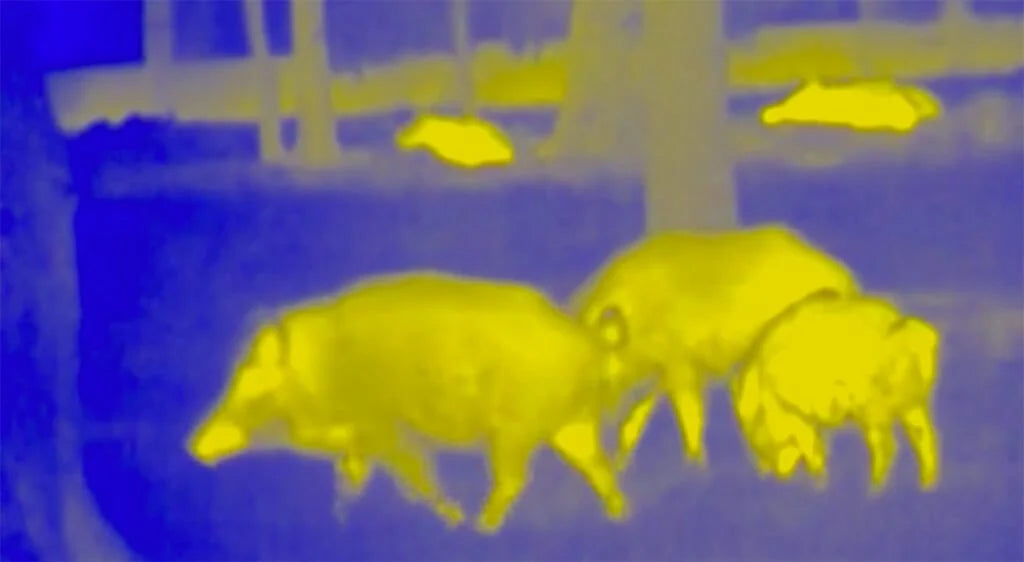
THERMAL
Thermal imaging operates on completely different principles, detecting heat signatures through infrared radiation rather than amplifying visible light. Thermal imaging cameras use arrays of microbolometers or mid-wave detectors (depending on the specific device) to create visual representations of temperature differences across scenes.
Thermal Imaging Applications:
- Detection of living creatures and heat sources regardless of lighting
- Search and rescue operations
- Security applications where heat signatures matter most
- Function in complete darkness without any light source
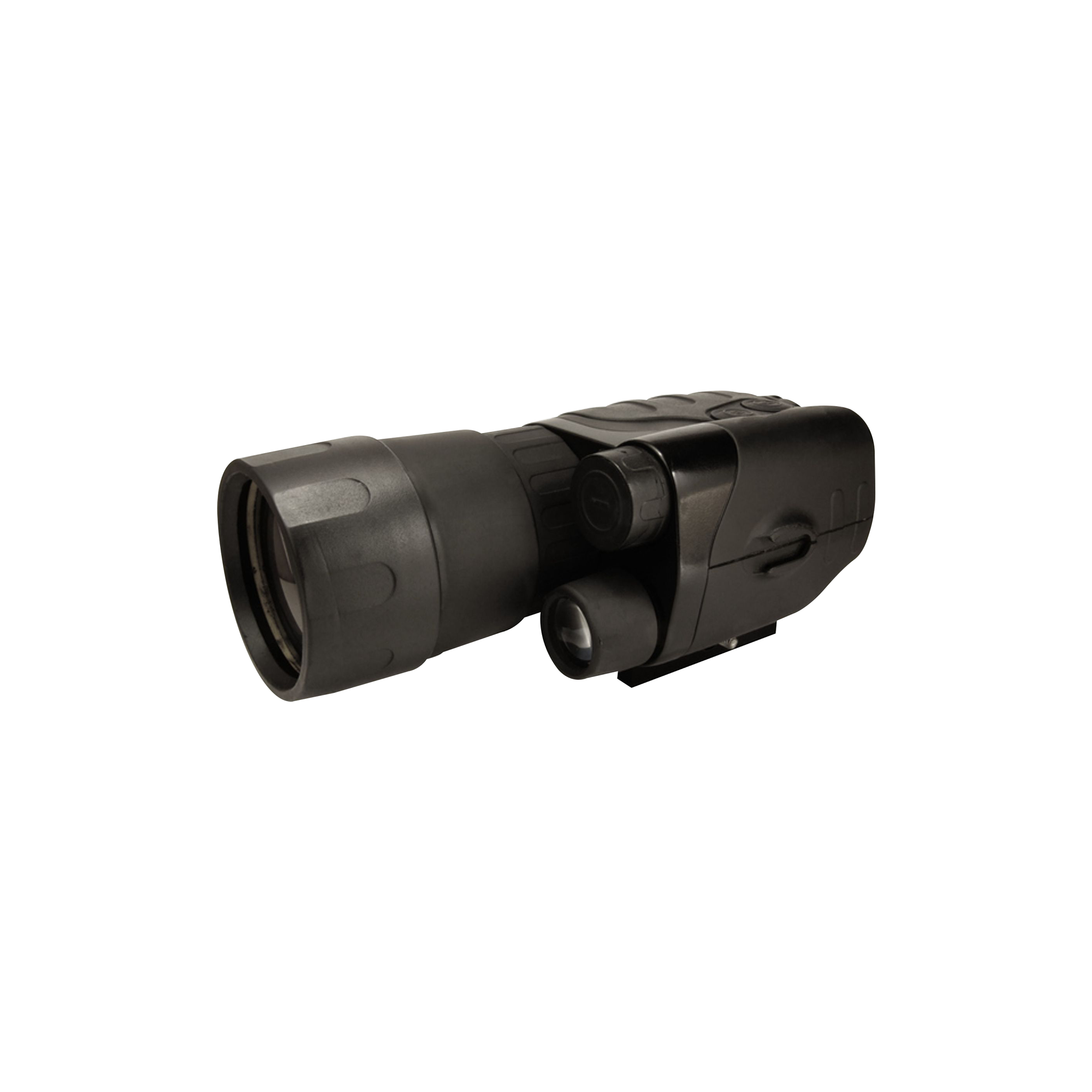
NOVELTY
At the very bottom of the night vision market are toys advertised as night vision devices to the unassuming. These units are typically cheap and claim to allow the user to see in the dark. A nice quality flashlight is far more effective at the task.
At their best, these devices can offer similar performance to inexpensive indoor home security cameras equipped with a night mode. To produce a quasi-visible image in a low-light environment, an external infrared illuminator, or a filtered light source is required. Even then, the image is only discernible at very close distances, and typically most effective within the confines of a small room with light colored, reflective walls.
In low/no light conditions, even with the aid of an artificial light source, these devices offer extremely limited range and suffer from excessive, image obscuring electronic noise. Anything beyond the distance of its flood illuminator will be unrecognizable.
While these novelty devices use a digital sensor, they should not be confused with high-quality, CMOS-equipped digital night vision devices.
WHERE NIGHT VISION IS USED
Night vision technology serves diverse applications across professional and recreational environments.
- Law enforcement and military personnel rely on night vision for tactical operations and surveillance.
- Marine professionals use night vision cameras for safe navigation in coastal waters and debris detection.
- Hunters and wildlife observers depend on these devices for tracking nocturnal animals and outdoor activities.
- Security professionals employ night vision equipment for property monitoring and perimeter surveillance.
- Recreational users increasingly adopt night vision devices for hiking, camping, and wildlife photography.
- Search and rescue teams utilize thermal imaging and digital night vision for emergency operations.
- Homeowners and business owners can even use this technology for enhancing security around their properties.
SIONYX NIGHT VISION TECHNOLOGY
SIONYX has developed proprietary sensor technology that extends sensitivity into near-infrared wavelengths typically invisible to standard digital cameras and security cameras. This enhanced spectral response dramatically improves low-light performance while maintaining color accuracy in various lighting conditions. The XQE-1350 sensor delivers exceptional 1.3-megapixel imagery at light levels below 1 millilux (moonless clear starlight), functioning effectively in near total darkness.
Our digital night vision devices combine advanced sensor technology with rugged construction suitable for marine, hunting, and security environments, functioning as essential tools for professionals and outdoor enthusiasts alike.
SIONYX NIGHT VISION OPTIONS
Aurora Series - Handheld Night Vision Cameras
Perfect for wildlife observation, hiking, and general outdoor activities, the Aurora Series features:
- Ultra-low light sensitivity for challenging lighting conditions
- Color imaging capability when sufficient ambient light exists
- Compact, weatherproof construction for harsh environments
- Long battery life for extended use in dark conditions
Nightwave Marine - Purpose-Built for Boating
Designed specifically for marine applications, Nightwave Marine offers:
- Salt spray and vibration resistance for marine environments
- Integration with existing navigation systems and security cameras
- Permanent mounting options for wheelhouse installation
- Glove-friendly controls for wet conditions and night vision work
OPSIN - Tactical Night Vision Monocular
Inspired by U.S. DoD requirements, OPSIN features the proprietary XQE-1350 Black Silicon CMOS sensor for unmatched color low-light capability in tactical operations:
- <1 millilux moonless starlight sensitivity with 44° field of view
- Photo, video, and audio recording with built-in GPS and digital compass
- Helmet-mounted with up to 14-hour battery life for extended missions
- WiFi and Bluetooth connectivity for wireless streaming and data transfer
Whether you're navigating coastal waters under moonlight, observing nocturnal wildlife, or securing your property through the night, understanding how night vision works helps you choose the right technology and use it effectively. The darkness no longer limits your activities—with the right night vision equipment and knowledge, the night becomes an extension of your visible world, transforming complete darkness into a navigable landscape rich with information invisible to the human eye alone.
If you need guidance selecting the right night vision technology for your specific needs, our support team provides personalized recommendations based on your intended applications and operating environment.

